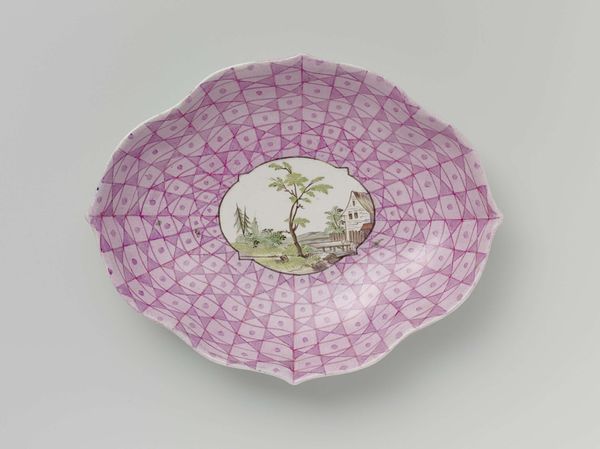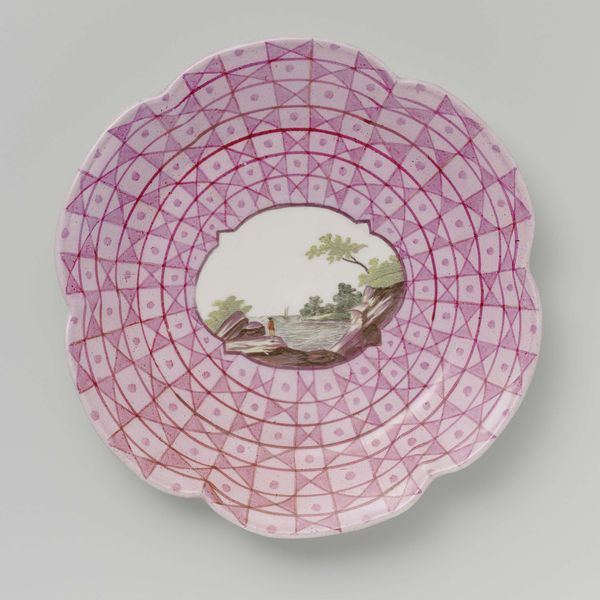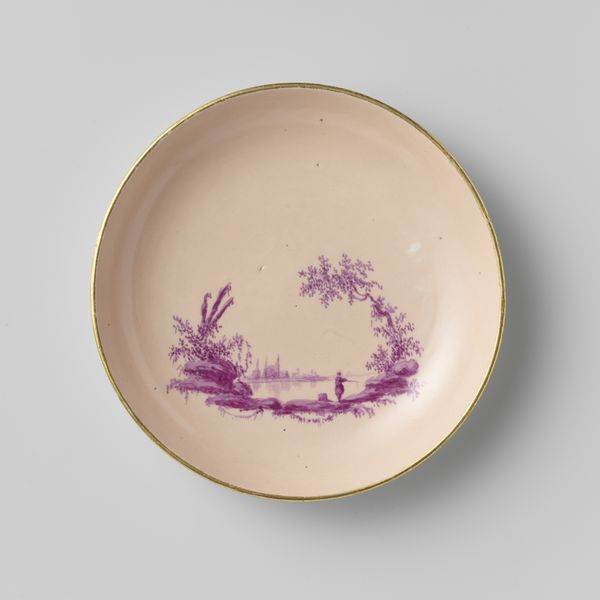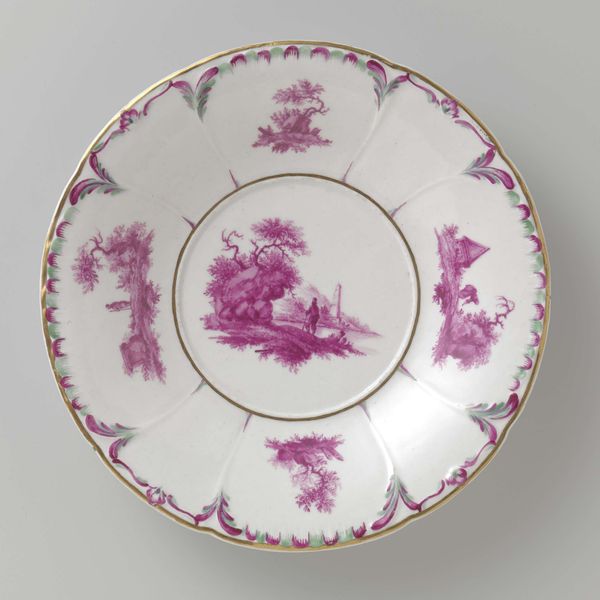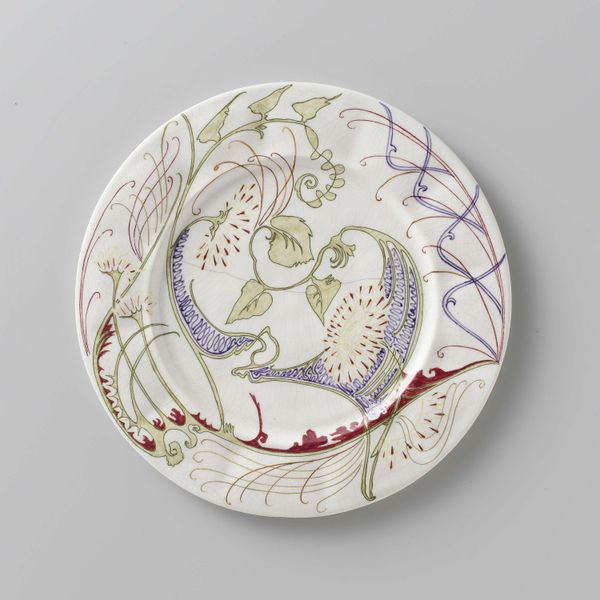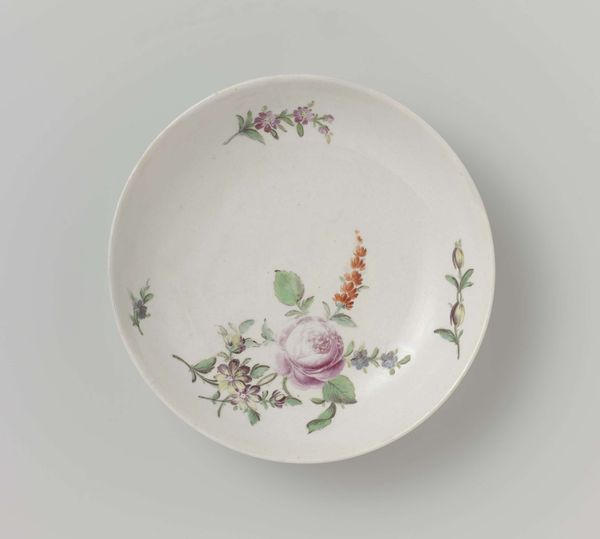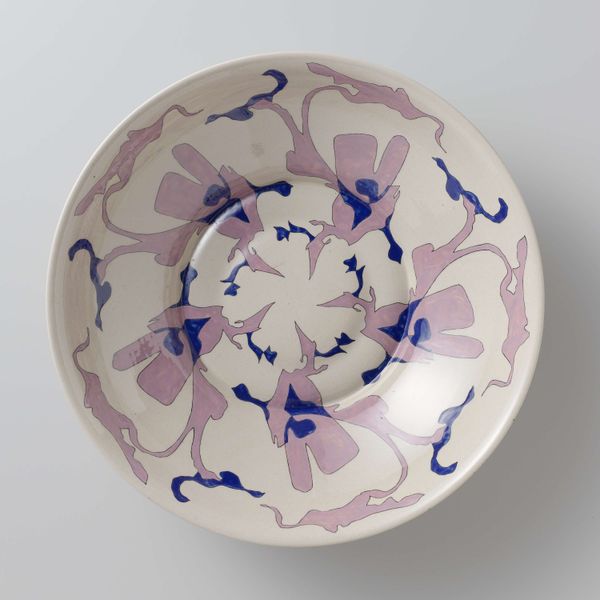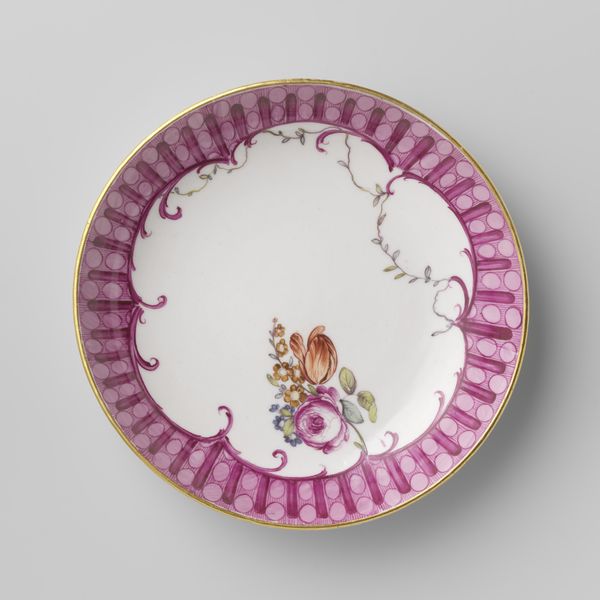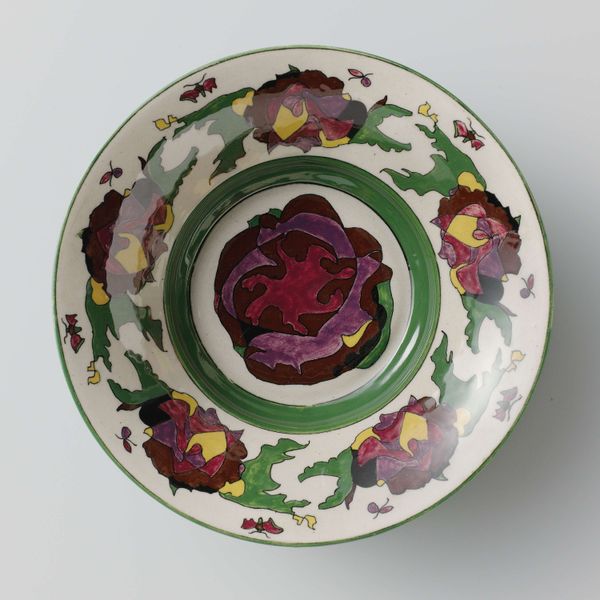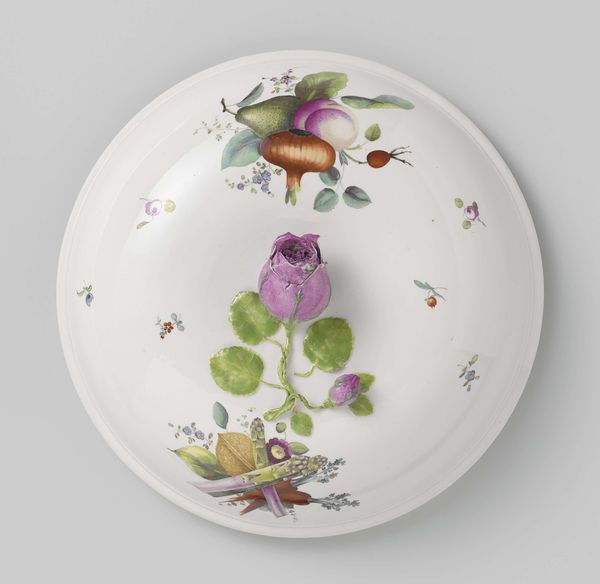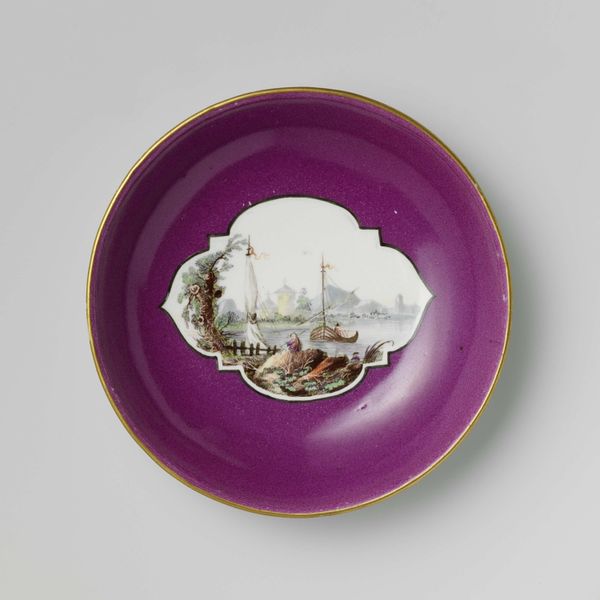
Schotel met een veelkleurig landschap in een medaillon uitgespaard in een geometrisch patroon c. 1759 - 1771
0:00
0:00
ceramic, porcelain
#
landscape
#
ceramic
#
porcelain
#
ceramic
#
decorative-art
#
rococo
Copyright: Rijks Museum: Open Domain
Curator: My first impression is of playful geometry surrounding a rather serene, almost romantic, miniature landscape. Editor: Indeed. Here we have a porcelain plate from the Weesper porseleinfabriek, created sometime between 1759 and 1771. The piece presents a multicolored landscape within a medallion, set against a striking geometric pattern. Curator: The geometric pattern is particularly intriguing. The repetition of squares, each marked with a dot, creates a dazzling effect around the central image. It's a bold, almost modern contrast to the idyllic scene. Semiotically speaking, this geometric network could represent rational order imposing itself upon nature. Editor: I would argue that this combination reflects the socio-political climate of the time. We see the influence of the Rococo style, but there's also an underlying tension—an effort to contain the wildness of nature within the structures of a burgeoning capitalist society. Decorative arts during this era often served to demonstrate status. Curator: You read its cultural implications while I analyze the structural contrast: that central image features a picturesque ruin and a couple of very vertical and attentive pine trees and an oddly placed stump of tree. Compositionally, they pull the viewer's gaze upward, toward what seems to be escape. Editor: It is interesting to me that this wasn’t merely utilitarian tableware; it was an indication of having acquired refined taste. Owning something like this indicated integration with a wealthier or noble community. Curator: So the plate is itself an indication, or marker, of an attempt to move socially through refined ownership and usage? Fascinating. Thinking now of form again, there’s such an odd use of two-dimensional design elements against this single, three-dimensional perspective; the painter, and commissioner, sought something that bridged a divide perhaps. Editor: The plate serves as an insight into the values of 18th-century Dutch society—their aspirations, their sense of control, and the blending of naturalism with imposed structures. Curator: I will leave here thinking not only about the artwork, but of that interplay between representation, and self representation! Editor: Yes! Leaving me wondering how the desire to elevate oneself hasn't actually changed much at all through the centuries.
Comments
No comments
Be the first to comment and join the conversation on the ultimate creative platform.
